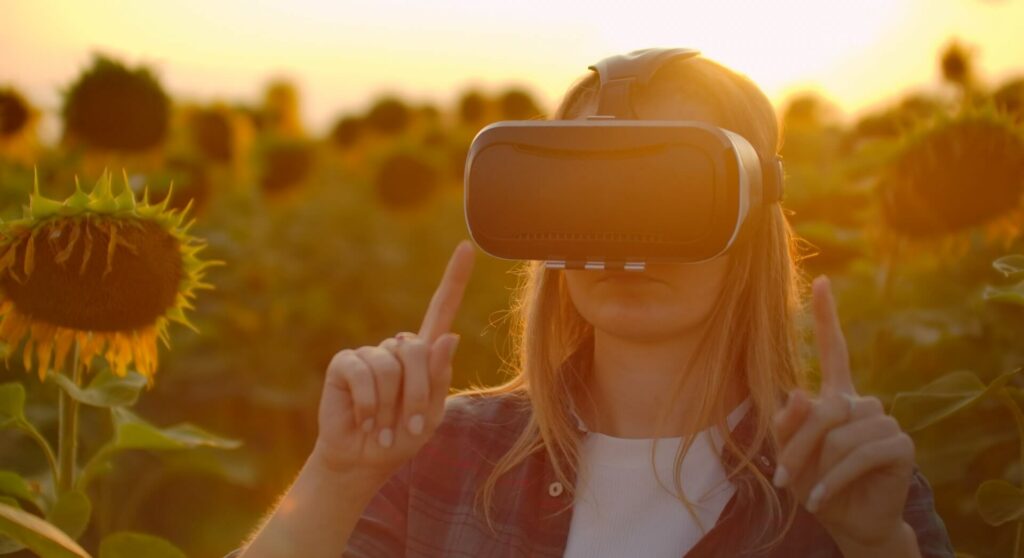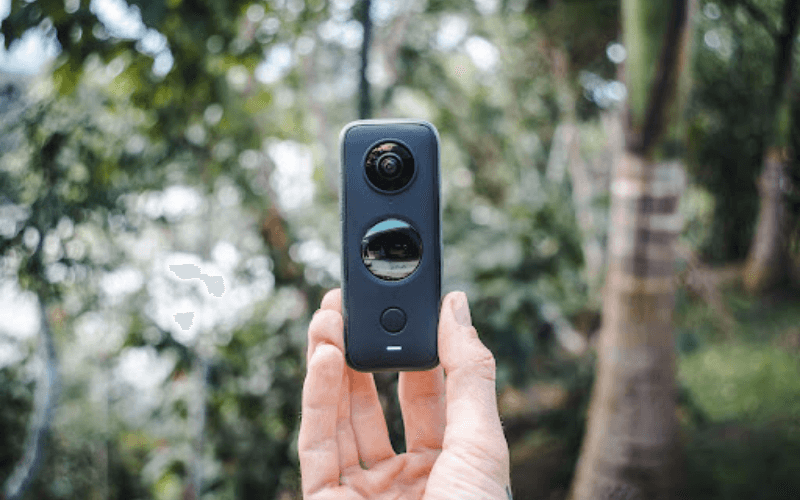Highlights
Table of Contents
Explore article topics
What initially started as a bit of a gimmick has promised to be the next big thing for many years. Although 360 video will never take over or replace traditional films and videos, it’s really taken off over the past few years. It has finally found its own place within the world of online video trends. Whether it’s incredible action shots from a mountain biker racing down a hill or a really immersive property tour on a VR headset, we’re getting comfortable with and enjoying 360-degree videos. As a result, nowadays, more so than ever before, 360 video is very easy to create.
However, it may still seem a little bit daunting to a total beginner, right? It’s not as straightforward as getting to grips with a standard vlogging camera. In this article, we’ll be looking at answering “what is a 360 video?” and why you should consider creating them. We’ll then take you through the step-by-step guide for how to make a 360 video using your 360 video camera. Let’s get into it.
What is a 360 video?
In simple terms, 360 video is a video recording where a view in every direction is recorded simultaneously. Shot using an omnidirectional camera (or a collection of cameras, if you want), it allows viewers to view a 360-degree world. You may also hear 360-degree video referred to as 360 VR video, spherical video or immersive video. All of these are the same thing, effectively.
Why create a 360 video?
So, why would you want to learn how to make a 360 video? Admittedly, the practicalities are a bit niche compared to other types of cameras, but it certainly has great use cases.
Enhance the action
First, if you’re creating any sort of outdoor sports and action video, shooting with a 360 video camera can be a great way to achieve unique shots that mesmerize your audience. You can entertain them in a way they haven’t seen before. It allows you to “film yourself” from a different angle that was previously only achievable with another cameraman present.
Engage your viewers
Of course, 360 video is also exciting to watch and participate in, right? By feeling like they are part of the environment you’ve created and being “inside” your world, they feel more engaged and naturally are motivated to watch more.
Be educational
Alternatively, for the same reasons that 360-degree video is a more immersive video experience, you may want to create one for educational purposes. You’ll often find them used for destination marketing, too. At most expos, you’ll see people in awe, wearing their VR headsets as they take a 360 VR video tour.

What gear do you need for a 360 video?
Because it’s still an emerging technology, there are many different 360 video camera options out there on the market. So, choosing a camera can be difficult. However, as a beginner who is looking at the price point, ease of use and quality, we think 2 options stand head and toe above the rest of the 360-degree video cameras at this moment in time:
- GoPro Max

Source: GoPro
- Insta360 ONE X2

In the grand scheme of things, these 2 are what you would describe as a “budget camera,” yet they offer superb quality 360-degree video and are fairly easy to get to grips with.
Below, we’ll go through some tips to get you started.
Tips for shooting a 360 video
-
Ensure alignment
The biggest piece of advice is that you should always ensure your camera tripod or selfie stick is aligned directly underneath your 360-degree video camera. If the camera is not placed correctly, the selfie stick will show up in editing when you are “stitching” the video together (more on that below).
-
Point directly at your subject matter
The “stitch zone” is a small but noticeable line where the videos from the 2 180-degree cameras are joined together. You don’t want anything you’re focusing on to fall inside this line because it will look a bit amateur and throw your audience off.
-
Make sure your lens is clean
This one goes for just about any camera, but it’s super important that you clean your 360-degree video camera lens. Any dirt – even tiny specs of dust – will be noticeable and degrade the quality of your video.
-
Try to shoot shorter clips if possible
When “stitching” the video, your computer is doing a fair bit of processing work, so you want to limit this ideally. Stick to clips that are no longer than 2 minutes long, and you’ll dramatically lower your work in the edit.
-
Find good lighting
Again, this goes for just about any camera, but it goes double for a 360 video camera. Their dynamic range isn’t mind-blowing (look at how small they are), so you can make a huge difference to the quality of your 360 video footage just by filming somewhere with good light.
-
Don’t forget to experiment
360 VR video is a new technology that really challenges the concepts and lessons we’ve learned through traditional filmmaking. Don’t be afraid to bend the rules and break boundaries. That’s what immersive video is all about!
How to edit a 360 video
In that last part covering how to make a 360 video, there were a lot of mentions about “stitching”. While it sounds surgical, it’s actually incredibly straightforward. With a 360-degree video camera such as the GoPro Max or Insta360 ONE X2, you have 2 180-degree cameras filming on opposite sides. You need to stitch this footage together to create your 360-degree spherical video in the edit.
Fortunately for you (and this is a huge part of why we recommend these 2 cameras in particular), the GoPro Max and Insta360 ONE X2 both come with 360 video editor software, making the “stitching” of your footage very easy and pain-free. All you need to do is download the relevant app onto your phone or desktop, and the 360 video file will be instantly viewable.
From here, you can choose to make keyframes and other editing choices if you’re planning on inserting the footage into a traditional video (a classic 16:9 1080p HD video on YouTube, for example).
Alternatively, if you plan to upload the footage as a “true” 360 spherical video, you can go ahead and export it straight away.
For a fully immersive video, you’ll need to download this Spatial Media Metadata Injector. It sounds technical, but it’s not. You simply open up the app, tick the box that says “my video is spherical (360)”, then open up your file and click “inject metadata”. That new file is the one you can upload to YouTube, Facebook or wherever else you plan on hosting your 360 video.
Uploading your 360 video
One of your last questions may be how to upload a 360 video to YouTube, Facebook or one of the other social media platforms that support 360 spherical videos. The answer is actually very straightforward. Once you’ve exported using the “Spatial Media Metadata Injector”, you can upload your file as you would a normal video.
It’s worth noting that it will take long for this 360 video to process, so be patient. When it’s ready, you should be able to use the keyboard and mouse to look “around” the spherical video while watching! If you’re on a touchscreen device, you can simply drag and move with your fingers.
Wrapping up
So, that’s everything you need to know about how to make a 360 video as a beginner. Sure, it can seem daunting at first. But, the 360-degree video camera options we’ve recommended and the accompanying 360 video editor software make the experience relatively smooth and pain-free nowadays.
All that’s left for you to do now is to experiment and have some fun with this new, exciting technology that can take your videos to the next level.
Josh Edwards is an accomplished filmmaker, industry writing veteran, storyteller based in Indonesia (by way of the UK), and industry writer in the Blade Ronner Media Writing Collective. He's passionate about travel and documents adventures and stories through his films.
Share this article
Did you find this article useful?
Related Posts
- By Josh Edwards
- 14 MIN READ
Latest Posts
- 17 Apr
- By Daniela Bowker
- 7 MIN READ
